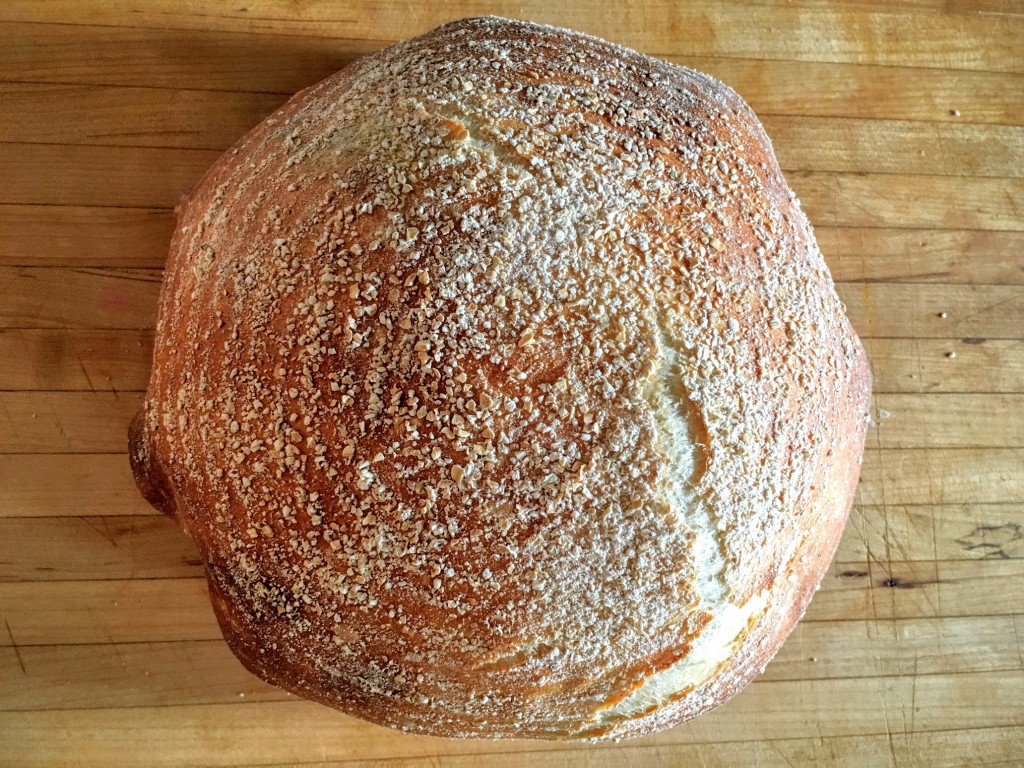
Clayton, who was a newspaper reporter, fell in love with baking bread during a bicycle trip across Europe in the early 60’s. He went on to write several landmark baking books and won two James Beard awards for his books. One of the things that makes his recipes fun to try is that most are prefaced with some sort of a story as to why he the bread is included, maybe a short history of that particular loaf, and occasionally interesting tidbits about his life.
One of my favorite recipes of this book is his Pain Ordinaire Careme (A Daily Loaf). Clayton says this bread was developed by a baker about 175 years ago as a type of table loaf, one to have around the house at any given time. Named after Antonin Careme, this is a good yeasted table loaf recipe that can be ready in just a few hour’s time and tastes great.
I altered this recipe just a bit by adding a little bit of sugar to encourage my yeast to eat up, since I was on a tight schedule. Start to finish, this will be ready in 3.5 hours and produces 3 medium loaves or 2 large ones.
Helpful Tools
For this loaf, the following tools were really helpful to me. These links take you to Amazon and help support the site!
- Kitchenaid Mixer
- Proofing Baskets
- Le Cloche
- Parchment Paper
- Complete Book of Breads by Bernard Clayton
Ingredients
[table id=9 /]
Process
- Put the flour, yeast, and salt in a bowl and mix to incorporate.
- Slowly add the water and continue to knead until it passes the windowpane test, about 15 minutes by hand or 5 in the mixer.
[ezcol_1half]The dough isn’t ready yet [/ezcol_1half] [ezcol_1half_end]
After a few minutes of kneading, it’s cleaned the sides of the bowl and passes the windowpane test [/ezcol_1half_end]
- Cover the bowl with plastic wrap and let it bulk ferment for about 2 hours. It will rise up nicely!
- Punch down the dough and dump on to a floured surface. Divide the dough in 3 and pre-shape.
- Shape and put in your floured baskets or baking pans, let ferment another hour. I put some oatmeal in my food processor and put some of the oat flour in the basket to keep the dough from sticking.
[ezcol_1third] - Pre-heat the oven to 425˚F.
- Transfer the loaves from the proofing baskets to parchment paper and slide on to a baking stone or le cloche. Bake the loaves for about 25-30 minutes, with steam, turning at the halfway point. I used a le cloche for my loaves.
- Remove from oven when ready and let cool for about 15 minutes before cutting!